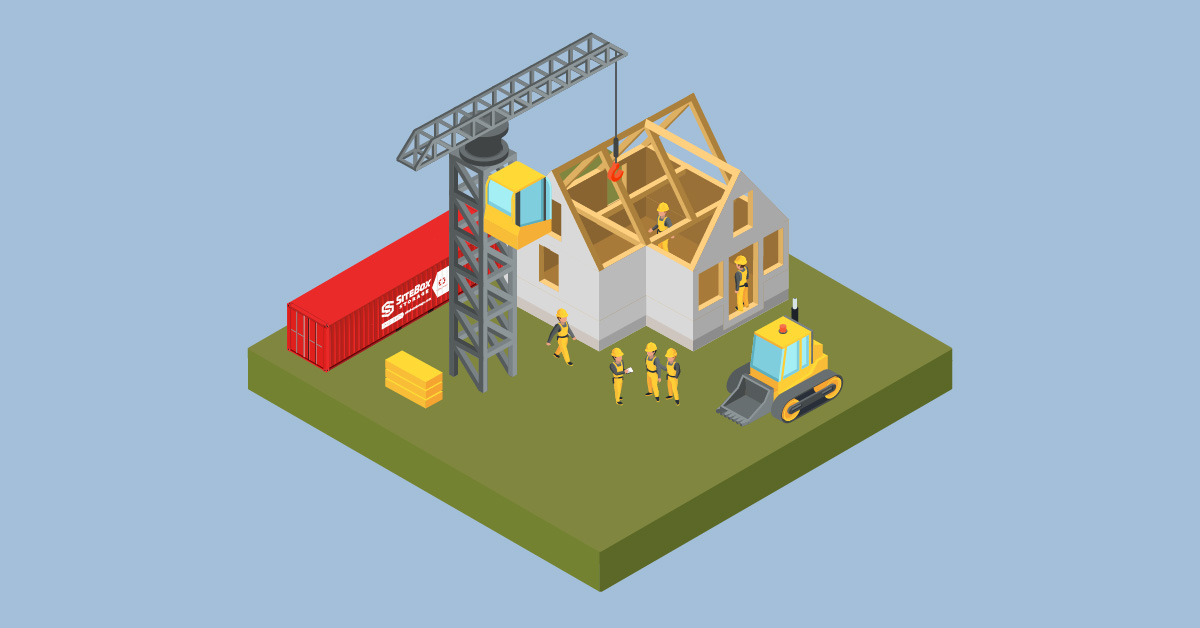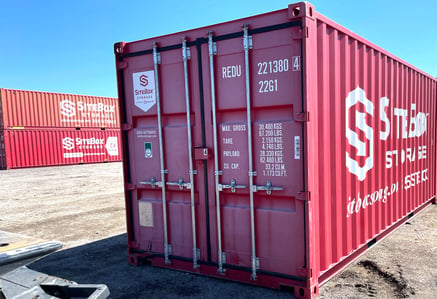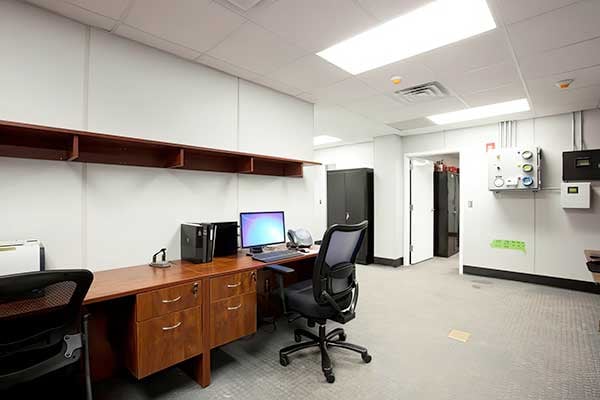Conex Boxes? What are They and Why Use Them?

You've probably heard someone mention a "conex box" and thought, "What's that?" These things go by a bunch of names, ISO containers, intermodal containers, cargo containers, sea cans, or just plain shipping containers. They're all talking about the same steel box.
So what exactly is one? Picture a large steel structure built for hauling and storing goods. The name "conex" came from the US Military way back when, short for "CONtainer EXpress." These boxes follow universal specs set by the International Organization for Standardization (ISO), meaning they play nice with rail, truck, or ship transport without needing special equipment.
Those standards make sure these storage containers can actually survive getting bounced around during transport and sitting through crazy weather. That toughness is exactly why conex boxes stick around in so many industries even after they're done shipping stuff overseas. They're also seriously secure, lockable doors plus options for adding more security features. Perfect when you've got valuable items or equipment to protect.
Lately, conex boxes have blown up on construction sites. People use them as portable storage, giant tool boxes, or even quick temporary offices once you throw in some windows and walls.
Types of Conex Boxes
Here's the thing, not all conex storage containers look or work the same way.
Standard dry containers are what you probably picture in your head. Sealed steel boxes that keep weather and thieves out, handling everything from construction gear to retail stock.
Refrigerated containers (everyone calls them reefers) keep temperatures controlled. Got food, medicine, or anything that'll go bad in heat or cold? These specialized units maintain stable conditions. They cost more, but when temperature matters, they're worth every penny.
Open-top containers come into play when you've got something massive that won't squeeze through regular doors. The roof comes off so you can load from above with cranes.
Flat rack containers basically give you a steel floor with walls on the ends. Perfect for super heavy or weirdly-shaped stuff.
Modified containers work as offices, workshops, or combo storage-workspace setups. These come loaded with extras like windows, electrical hookups, insulation, and climate control.

Dimensions and Specifications
Conex boxes come in standard sizes. Most common? Twenty or forty feet long with ceilings around 8 feet high. The taller ones get called High Cubes.
A 20-footer weighs roughly 4,800 pounds sitting empty. A 40-footer tips the scales over 8,000 pounds. When you pack one full, the average conex box hits about 3,520 kilograms.

Load capacity ranges from 57,000 to 63,000 pounds depending on how it's built and its size. That's enough muscle for heavy equipment or tons of materials.
Space wise, a 20-footer eats up about 160 square feet of ground and gives you around 1,170 cubic feet inside. The 40-footer needs roughly 320 square feet and provides about 2,390 cubic feet internally.
Get this, over 72,500 conex boxes are working across North America right now. Shows you how common these storage solutions have gotten.
Material and Durability
Heavy gauge corrugated steel builds the walls, floor, and roof. This isn't your basic sheet metal. We're talking steel engineered to survive ocean crossings, stacking nine containers high, and decades getting beat up. The corrugated design adds strength without making things ridiculously heavy.
The steel gets treated so corrosion doesn't eat it alive. Salt air, humidity, rain, snow, these containers laugh at all of it. That weatherproof setup protects whatever's inside, year after year, without much babysitting.
Corner posts and reinforcement beams give containers the backbone to stack safely and handle crazy stress during lifting and moving around.
Paint and coating systems keep rust away. Quality containers use industrial-grade finishes meant for nasty environments, making them last way longer.
Wooden flooring (usually marine-grade plywood) covers the steel floor base, handling heavy loads while fighting off moisture and wear.
The durability thing explains why used conex boxes keep circulating for years. These aren't throwaway items. They're built to stick around for decades if you take care of them.
Security Features
Basic steel construction gives you solid security right off the bat. Those corrugated steel walls? Not exactly easy to cut through or pry open. Thieves face a real challenge.
Lockable cargo doors use heavy-duty hinges and locking gear. Standard lock boxes protect padlocks from tampering. You can level up to high-security locks, electronic systems, or custom stuff depending on what you're protecting.
Sealed construction keeps everything hidden. Can't see what's inside means thieves don't know if breaking in is worth the hassle.
Want more security? Add alarm systems, motion sensors, cameras, security bars, or beef up entry points. The solid build supports all these upgrades.

Around 62.9% of businesses using portable storage say their on-site efficiency got better, partly because secure storage means less time stressing about theft.
Construction sites, industrial spots, anywhere you've got valuable equipment, conex storage containers bring serious security to the table.
Common Uses and Applications
Construction sites probably win for most common use. Contractors stash tools, equipment, and materials in containers right there on site. No more driving to some facility across town or losing sleep over overnight theft. Some sites turn modified containers into temporary offices.
Retail shops lean on conex boxes for seasonal inventory. Holiday shopping madness or any peak period creates overflow without needing to expand the actual building.
Residential uses keep growing. People rent containers during home renos to store furniture. Moving? Pack the container slowly, ship it, unpack whenever. Way less crazy than regular moving.

Industrial places use containers for raw materials, finished stuff, or equipment storage. Weatherproof and secure nature makes them reliable.
Event folks use portable storage for equipment and supplies. Containers show up for the event, hold everything secure, then disappear when it's done.
Here's a wild stat, about 58.3% of portable storage units get rented for residential purposes. These aren't just for businesses anymore.
Rental vs. Purchase Options
Renting makes sense when you need storage temporarily. Construction projects with end dates, seasonal needs, one-time events, rentals work great. Get the container when needed, send it back when done.
Rental costs jump around based on location, size, and how long you need it. Short-term costs more per month than long-term deals. Companies like SiteBox Storage offer flexible terms.
Buying works when storage isn't going anywhere. Need the container for years? Buying kills those recurring rental fees. Used containers cost less than new but still work great. Portable storage demand jumped 14.7% between 2023 and 2024.
Lease-to-own sits in the middle. Monthly payments eventually make it yours, spreading costs while working toward ownership.
Used barebones units might start a few thousand bucks. Bigger specialty units with mods can hit around $20,000 or more. New containers cost premium prices.
You can definitely buy used conex boxes since they last forever and stay in circulation. But inspect before buying. Look for rust, damage, door problems, overall condition. Stick with sellers you can trust.
Maintenance and Care Tips
Conex boxes don't need much babysitting, but some care keeps them running longer and working right.
Check things regularly to catch problems early. Roof got standing water or junk? Check door seals. Test hinges and locks.
See rust starting? Jump on it immediately. Fixing it now beats dealing with bigger problems later. The treated steel fights corrosion naturally, but early action keeps that protection working.
Keep doors and hinges lubricated so everything moves smoothly. Clean inside now and then, especially if you're storing stuff that makes dust or debris.
Got modifications like electrical, HVAC, or plumbing? Follow whatever the manufacturer says. The container itself needs barely any work, but extras need attention.
Containers sitting in harsh spots or coastal areas with salt air? Check more often to catch corrosion before it spreads.
Frequently Asked Questions
What are Conex boxes? Large steel shipping containers originally built for hauling goods. Name comes from "CONtainer EXpress." Also called ISO containers, cargo containers, or shipping containers. Built tough to ISO standards, durable, secure, weatherproof.
What sizes do Conex boxes come in? Standard sizes are 20 and 40 feet long, both around 8 feet wide and 8 feet tall. High Cube versions give you taller ceilings. Twenty-footer provides roughly 1,170 cubic feet storage, forty-footer gives about 2,390 cubic feet.
Are Conex boxes suitable for portable storage? Absolutely. Perfect for portable storage. Steel build protects stuff from weather and thieves. Mobile, secure, various sizes available for temporary or permanent needs.
How secure are Conex boxes? Very. Heavy gauge steel, lockable doors, tamper-proof design make breaking in tough. Add high-security locks, alarms, whatever you need. Sealed design hides contents, reducing theft risk.
Can I rent a Conex box? Yep. Lots of companies including SiteBox Storage rent them with flexible terms. Short-term or long-term rental periods. Some offer lease-to-own too.
How much does a Conex box cost? All over the map. Used containers might start a few thousand dollars. Bigger units or ones with mods can hit around $20,000. New containers cost more. Rental rates depend on size, location, how long you need it.
Are Conex boxes weatherproof? Totally. Steel construction and sealed design protect contents from rain, snow, wind, humidity. Originally built to survive ocean trips, so extreme weather isn't a problem.
Can Conex boxes be easily transported? Yeah. Designed for moving via truck, rail, or ship. Delivery uses special tilt-bed trucks that drop containers where you want them. Standardized design works with regular transportation and lifting gear.
What materials are Conex boxes made of? Heavy gauge corrugated steel for walls, floor base, and roof. Steel gets treated to fight corrosion. Most have marine-grade plywood flooring over steel. Paint and coatings protect against rust.
Where can I buy or rent Conex boxes? SiteBox Storage does both sales and rentals across multiple locations. Other providers work regionally and nationally. Go with reputable companies, ask questions about condition and specs, inspect before you commit.






